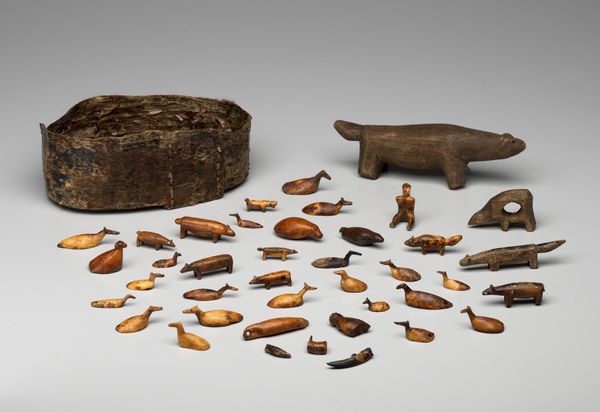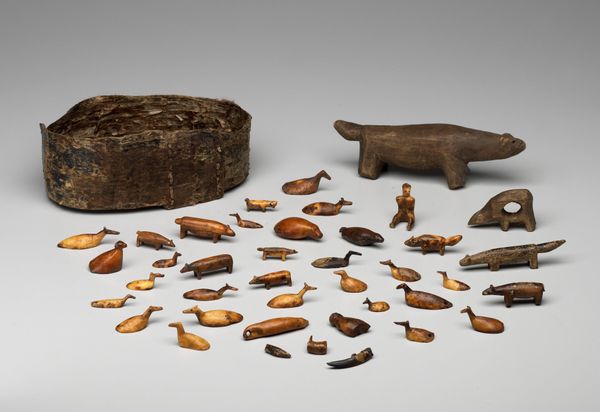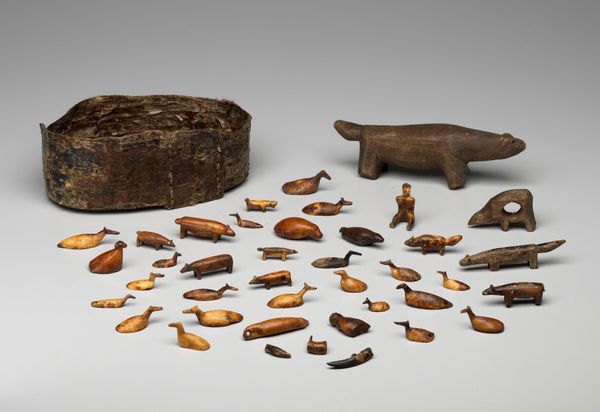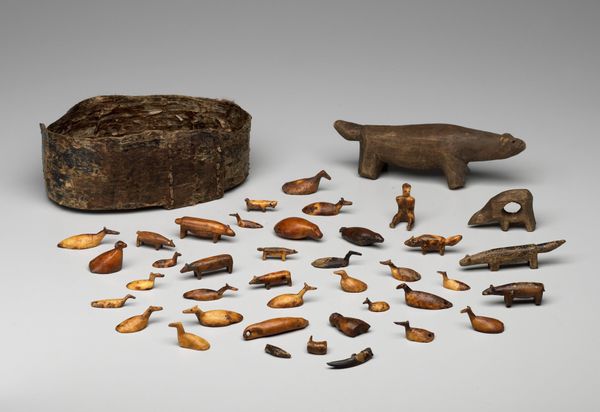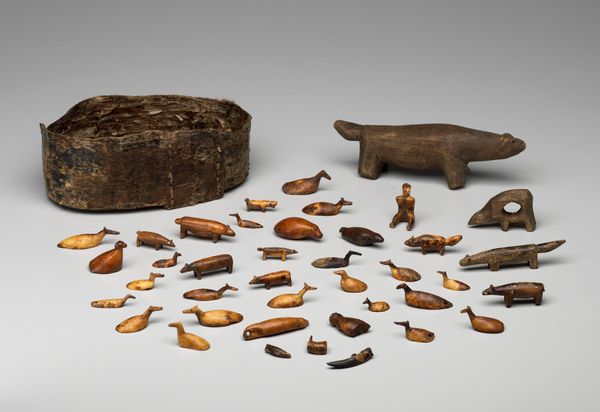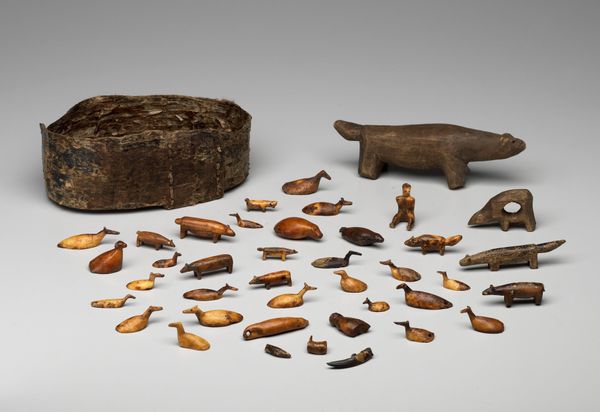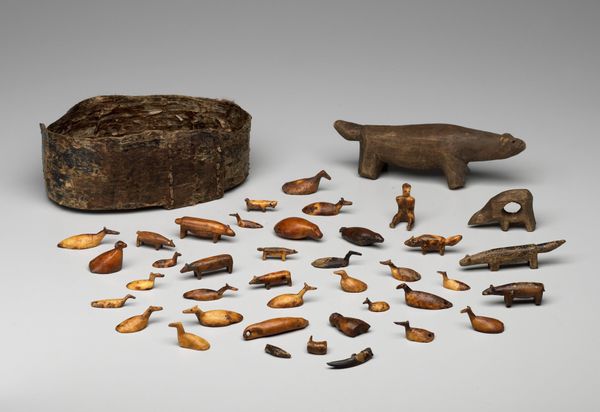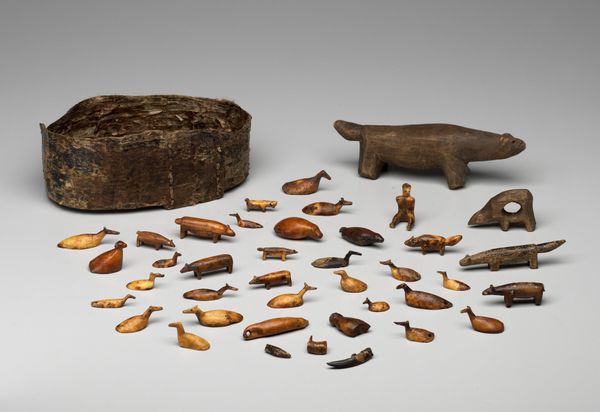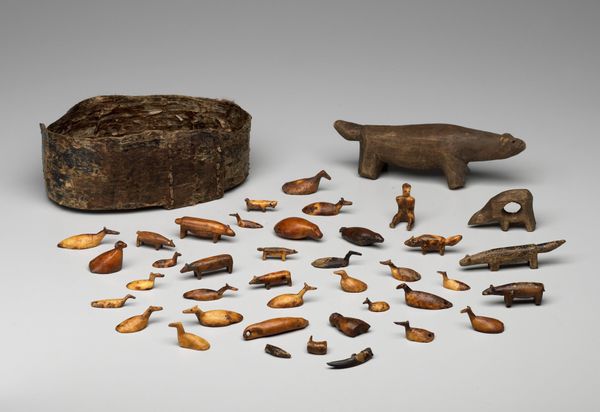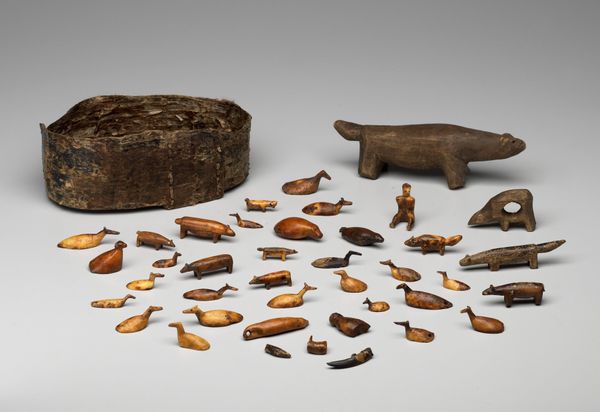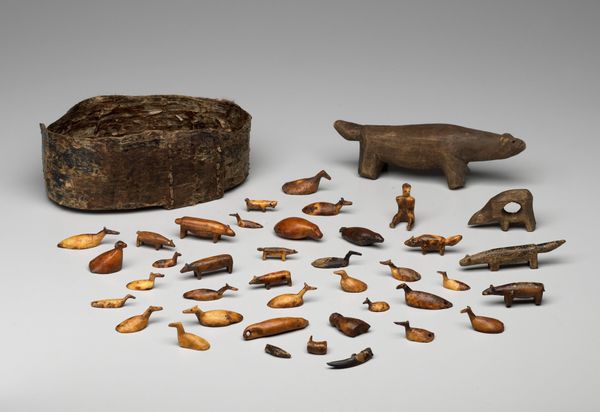
carving, sculpture
#
carving
#
figuration
#
sculpture
#
miniature
#
indigenous-americas
Dimensions: 5/8 x 7/8 x 1/2 in. (1.59 x 2.22 x 1.27 cm)
Copyright: Public Domain
Curator: Before you is "Quadruped," a fascinating collection of Inuit carvings held here at the Minneapolis Institute of Art. Made before 1500, they’re constructed from materials like wood and ivory, a blend of organic forms rendered in miniature. Editor: I'm struck immediately by the range of colors, the browns and creams—but also the textures. The smoothness of the animal carvings contrasting with that bark container...there’s something grounding in the natural variations. Curator: Absolutely. Consider these objects in light of the traditional Inuit world view. Animals were not simply resources, but beings possessing spirits and deserving of respect. We need to reflect upon the dynamic relationships, the very *ontology*, linking the human and non-human. Editor: And how were these interactions regulated? I mean, how were those relationships understood in the day to day? How does this shape the production, the consumption, even the display of the objects themselves? Curator: These miniatures served several vital roles. They may have acted as amulets for successful hunts, ensuring that the hunter would be worthy to secure this particular animal’s provision, a critical acknowledgement of interconnectedness and ecological respect. We must resist romanticizing; it reflects real, immediate social and survival imperatives. Editor: Right. Survival isn’t separate from the social or the spiritual—the container could indicate ceremonial purposes, right? Also a means of preserving fragile artifacts as well... There is much we can unpack about this work through a conversation on ritualized ecological practices and environmental agency. Curator: Indeed. The miniatures also may have functioned as teaching tools, passing down crucial knowledge about animals to younger generations, underscoring knowledge systems intrinsically bound up with their survival in harsh conditions. Editor: And within that knowledge transfer, is there any way we might understand what this reflects about an early understanding of colonial influence and power? These materials surely point to interactions, earlier networks perhaps—are these solely records of native animals? I would think there might be influences represented that are often whitewashed... Curator: That's an important thread to keep untangling; even in these older works, it is imperative that we do. "Quadruped," then, invites an analysis through the politics of image and material culture in indigenous societies, revealing complex and resourceful interactions with their world, internal as well as external. Editor: So much depth residing in such tiny forms, and perhaps further complexities locked within them too... Curator: A truly evocative testament to Inuit ingenuity and reverence.
Comments
No comments
Be the first to comment and join the conversation on the ultimate creative platform.
